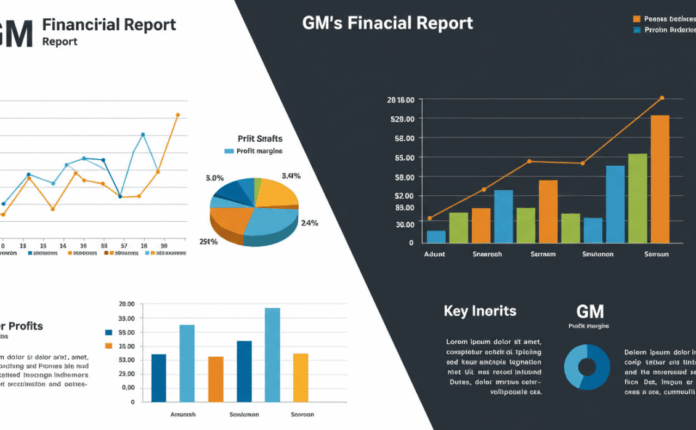Launching a business is an exhilarating journey filled with opportunities, challenges, and transformative moments. For aspiring entrepreneurs, the path from a fledgling startup to a thriving enterprise requires careful planning, resilience, and strategic execution. This article outlines the essential steps to transform your business idea into a successful reality, offering practical insights and actionable advice to help you navigate the entrepreneurial landscape. Whether you’re dreaming of a tech startup, a retail venture, or a service-based business, these steps will guide you toward sustainable growth and long-term success.
Step 1: Validate Your Business Idea
Why Validation Matters
Before investing time and resources, it’s crucial to ensure your business idea has market potential. Validation involves researching your target audience, analyzing competitors, and testing your concept to confirm demand. A validated idea reduces risks and provides a solid foundation for your startup.
How to Validate Effectively
Start by conducting market research through surveys, focus groups, or online tools like Google Trends to gauge interest in your product or service. For example, if you’re planning to launch a tech gadget, explore forums like Reddit or Product Hunt to see what consumers are saying about similar products. Create a minimum viable product (MVP)—a basic version of your offering—and share it with a small group of potential customers for feedback. Tools like SurveyMonkey or Typeform can streamline this process. Additionally, analyze competitors to identify gaps in the market. For instance, if existing solutions lack user-friendly features, you can position your product to fill that void.
Tools to Use
- Google Trends: Tracks search interest over time.
- SurveyMonkey: Collects customer feedback efficiently.
- Product Hunt: Gauges interest in tech products.
By validating your idea early, you ensure your business aligns with real-world needs, saving you from costly missteps.
Step 2: Craft a Robust Business Plan
The Blueprint for Success
A well-structured business plan serves as your roadmap, outlining your goals, strategies, and financial projections. It’s not just a document for investors; it’s a tool to keep you focused and prepared for challenges.
Key Components of a Business Plan
Your business plan should include:
- Executive Summary: A concise overview of your business, its mission, and objectives.
- Market Analysis: Insights into your industry, target audience, and competitors.
- Marketing Strategy: Plans for branding, advertising, and customer acquisition.
- Financial Projections: Revenue forecasts, budgets, and funding requirements.
- Operational Plan: Details on logistics, production, and team structure.
For tech startups, emphasize scalability in your plan. For example, if you’re developing an app, outline how you’ll handle increased user traffic or integrate new features over time. Use tools like LivePlan or Bizplan to create professional-grade plans with templates tailored to startups.

Tips for a Standout Plan
Keep your plan clear and concise, avoiding jargon that might confuse readers. Include realistic financial projections—investors appreciate transparency. Revisit and update your plan regularly to reflect market changes or new opportunities.
Step 3: Secure Funding for Your Startup
Exploring Funding Options
Funding is the lifeblood of any startup, enabling you to develop your product, hire talent, and market effectively. Options range from bootstrapping to seeking venture capital, each with its pros and cons.
Popular Funding Sources
- Bootstrapping: Use personal savings or revenue to fund your business. This approach offers full control but limits growth speed.
- Angel Investors: Wealthy individuals who invest in early-stage startups in exchange for equity. Platforms like AngelList connect startups with investors.
- Venture Capital: Firms that fund high-potential startups, often in tech. Research firms like Sequoia Capital or Y Combinator for opportunities.
- Crowdfunding: Platforms like Kickstarter or Indiegogo allow you to raise funds from the public while building a customer base.
Pitching to Investors
A compelling pitch deck is essential. Use tools like Canva or Pitch to create visually appealing presentations. Highlight your unique value proposition, market potential, and traction (e.g., early sales or user growth). For example, if your startup offers a SaaS product, showcase metrics like monthly active users or subscription retention rates.
Step 4: Build a Strong Brand Identity
Why Branding Matters
Your brand is more than a logo—it’s the story, values, and experience you deliver to customers. A strong brand builds trust and sets you apart in a crowded market.
Creating a Memorable Brand
Start with a clear mission statement that reflects your business’s purpose. For instance, if you’re launching a sustainable tech product, emphasize eco-friendly values. Design a cohesive visual identity, including a logo, color scheme, and typography, using tools like Adobe Express or Figma. Ensure consistency across your website, social media, and marketing materials.
Leveraging Digital Presence
A professional website is non-negotiable. Platforms like Wix or Squarespace offer user-friendly templates optimized for SEO and mobile responsiveness—key for Google AdSense approval. Engage audiences on social platforms like X or LinkedIn with valuable content, such as tech tips or behind-the-scenes looks at your startup journey.
Step 5: Launch and Iterate
Planning a Successful Launch
A well-executed launch creates buzz and drives initial traction. Start with a soft launch to test your product with a small audience, gathering feedback to iron out kinks. For tech products, consider beta testing—Dropbox famously used this strategy to refine its platform before a full launch.
Post-Launch Strategies
Monitor performance using analytics tools like Google Analytics or Mixpanel to track user behavior and engagement. Iterate based on feedback: if users find your app’s interface clunky, prioritize UX improvements. Stay agile, adapting to market shifts or customer preferences.
Scaling Smartly
Once your business gains traction, focus on sustainable growth. Hire strategically, automate processes with tools like Zapier, and explore new markets. For example, if your tech product succeeds locally, consider international expansion with localized marketing.
FAQ
What is the first step to launching a successful business?
The first step is validating your business idea through market research, customer feedback, and competitor analysis. This ensures your product or service meets a real market need.
How much funding do I need to start a business?
The amount varies depending on your industry and scale. Bootstrapping may require a few thousand dollars, while tech startups seeking venture capital might need $100,000 or more. Create a detailed budget in your business plan to estimate costs.
How long does it take to launch a startup?
Timelines vary, but most startups take 6–18 months from ideation to launch. Validation and product development often take the longest, especially for tech ventures requiring extensive coding or testing.
What tools can help with branding and marketing?
For branding, use Adobe Express or Figma for design and Wix for websites. For marketing, leverage Google Analytics for insights, Buffer for social media scheduling, and Mailchimp for email campaigns.
How do I make my website AdSense-friendly?
Ensure your website has high-quality, original content, a user-friendly design, and mobile responsiveness. Include clear navigation, an “About” page, and a privacy policy. Regularly update content to demonstrate activity.
By following these steps—validating your idea, crafting a solid plan, securing funding, building a strong brand, and launching strategically—you’ll be well on your way to turning your startup into a success story. Stay adaptable, learn from feedback, and keep your audience engaged to thrive in today’s competitive landscape.



